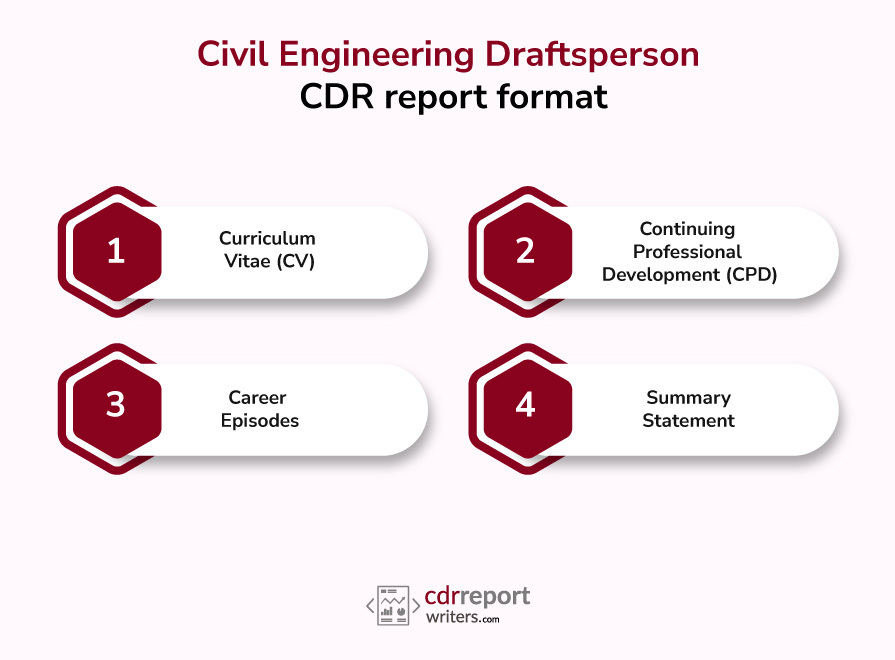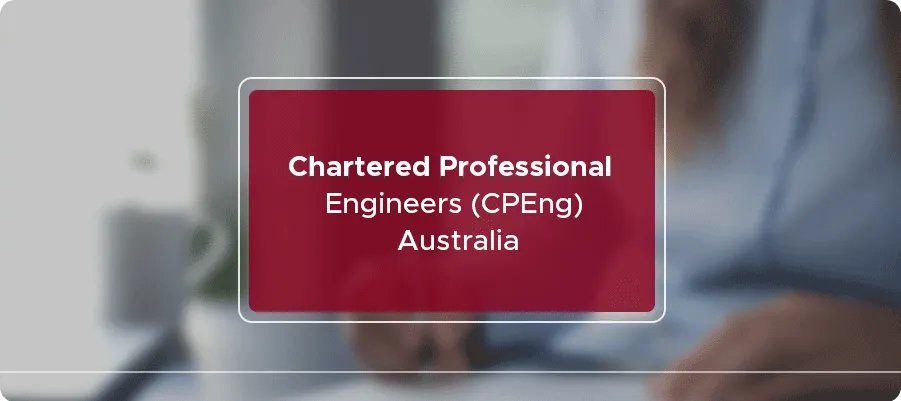
Must know things about Civil Engineering Draftsperson
Civil engineering is a field that encompasses various disciplines, including design, construction, and maintenance of infrastructure projects. Behind every successful civil engineering project, a team of professionals works diligently to create accurate and detailed plans.
One crucial member of this team is the civil engineering draftsperson. Here, we will explore the role of civil engineering draftsperson, their responsibilities, the skills required, and the importance of their work in construction.
Role of a Civil Engineering Draftsperson
A civil engineering draftsperson plays a crucial role in the design and construction process by creating detailed technical drawings, plans, and blueprints. These drawings guide engineers, architects, and construction teams to follow during project implementation.
The draftsperson acts as a bridge between the conceptual ideas and the practical execution of a project, ensuring that all technical aspects are accurately represented.
Civil Engineering Draftsperson CDR Report Format
The Civil Engineering Draftsperson Competency Demonstration Report (CDR) is a crucial document for the skill assessment of civil engineering draftspersons. It follows a specific format that allows engineers to showcase their skills, knowledge, and experiences in the field. The CDR report writing format has several sections, each serving a distinct purpose.

1. Curriculum Vitae (CV)
The Curriculum Vitae (CV) is an essential component of the Civil Engineering Draftsperson Competency Demonstration Report (CDR). It introduces the engineer’s professional background and summarizes their educational qualifications, work experience, professional memberships, and certifications.
The CV section allows engineers to present their credentials clearly and concisely to Engineers Australia, highlighting essential skills and achievements relevant to civil engineering drafting. When creating an ideal CV for a CDR, including accurate and up-to-date information is crucial. Start by providing personal details, such as name, contact information, and nationality.
Next, have an executive summary or career objective statement, briefly describing your professional goals and aspirations as a civil engineering draftsperson. The educational qualifications section should outline the degrees or diplomas earned, including the institution’s name, program of study, and dates of attendance.
Highlight any honors, awards, or distinctions achieved during your academic journey. The work experience section is a crucial part of the perfect CV. Include detailed information about your previous employment, including the job title, company name, employment dates, and a brief description of all roles and responsibilities.
Emphasize any experience in civil engineering drafting or related areas, such as creating technical drawings, using CAD software, collaborating with engineers and architects, and adhering to industry standards and codes. Additionally, include a section on professional memberships and affiliations.
Mention any relevant engineering associations or organizations you are a part of and any certifications or licenses you hold. This part demonstrates your commitment to professional development and dedication to staying current with industry standards.
To make your CV stand out, consider including a skills section where you list specific technical skills, software proficiencies (such as AutoCAD or Revit), and any additional languages or software programs you are proficient in.
2. Continuing Professional Development (CPD)
Continuing Professional Development (CPD) is an essential section of the Civil Engineering Draftsperson Competency Demonstration Report (CDR). It allows engineers to demonstrate their commitment to ongoing learning, professional growth, and up-to-date with the latest advancements in civil engineering drafting.
In the CPD section, engineers should outline their various activities to enhance their technical knowledge and skills. This section can include attending courses, workshops, conferences, seminars, or industry events. The activities chosen should be relevant to civil engineering drafting and align with the competency requirements.
When documenting CPD activities, engineers should provide details such as the title, duration, provider or organizing body, and a brief content description. It is essential to clearly articulate how each action has contributed to professional development and how the knowledge or skills gained have been applied in the engineer’s work as a civil engineering draftsperson.
CPD activities can cover various topics, including advancements in drafting software, changes in industry regulations or codes, emerging technologies, project management, and professional ethics. Engineers should focus on activities demonstrating their commitment to improving their technical competence and staying abreast of industry developments.
When writing CPD activities for EA, engineers should focus on the technical aspects and emphasize the benefits of these activities. This statement can include improved problem-solving skills, enhanced communication abilities, better project coordination, or an increased understanding of sustainable design principles.
Learn More: Important documents required for CDR in 2024 ⏱⌛️
3. Career Episodes
Career Episodes are crucial to the Civil Engineering Draftsperson Competency Demonstration Report (CDR). They allow engineers to showcase their projects, experiences, and accomplishments. Three career episodes are typically required, each focusing on a specific aspect of the engineer’s work.
In each Career Episode, engineers should provide details of a specific project or experience they have been involved in. They should clearly define the purpose and objectives of the project, their role within the team, and the tasks and responsibilities they undertook as a civil engineering draftsperson.
Including technical details in the Career Episodes to demonstrate the engineer’s competency and expertise is essential. These details can include descriptions of the drafting techniques, software applications, adherence to relevant codes and standards, and problem-solving strategies.
Engineers should highlight their ability to produce accurate technical drawings, handle complex design challenges, and work collaboratively with other professionals. In addition to technical details, engineers should highlight the specific challenges they encountered during the project and how they overcame them.
These details showcase problem-solving skills, adaptability, and the ability to work under pressure. Engineers can also discuss any innovations or improvements they introduced to the project or their contributions to the team’s overall success.
Each exceptional career episode should demonstrate the engineer’s application of the relevant competency elements required for civil engineering draftspersons. These include drafting techniques, quality control, adherence to codes and regulations, communication skills, and teamwork.
4. Summary Statement
The Summary Statement is a crucial section of the Civil Engineering Draftsperson Competency Demonstration Report (CDR). The cross-referencing document links specific paragraphs of the Career Episodes to the relevant competency elements required by the assessing authority.
The Summary Statement concisely summarizes how the engineer meets the competency requirements for civil engineering draftspersons. It demonstrates the engineer’s understanding and application of the specific competency elements outlined by the assessing authority.
In the Summary Statement, engineers should identify the competency elements addressed in each Career Episode. They should summarize the evidence offered in the Career Episodes and how it aligns with the specific competency elements. It also references particular paragraphs or sections of the Career Episodes demonstrating the engineer’s proficiency in each competency element.
It is essential to provide a clear and logical structure to the Summary Statement, ensuring that the evidence is easily identifiable and linked to the relevant competency elements. Engineers should focus on providing concise and specific information, avoiding unnecessary repetition or duplication.
The Summary Statement demonstrates the engineer’s competence as a civil engineering draftsperson. It allows the assessing authority to efficiently review and assess the engineer’s abilities based on the evidence presented in the Career Episodes. Ensuring that the Summary Statement accurately reflects the engineer’s proficiency in each competency element is crucial and provides a compelling case for their skills and expertise.
Learn More: Australian Visa Options for Qualified Electrical Engineers 🧑🏽✈️🏆
Requirements for Skill Assessment
Specific requirements must be met to undergo skill assessment as a civil engineering draftsperson. These requirements typically include educational qualifications, work experience, technical proficiency, knowledge of engineering principles, and communication skills.
A recognized qualification in civil engineering drafting or a related field is a fundamental requirement. This qualification typically involves completing a relevant degree or diploma from an accredited educational institution. The credentials demonstrate a foundational understanding of drafting principles, design principles, and industry standards.
A minimum of two years of relevant work experience is generally required for skill assessment. This experience provides practical exposure to civil engineering drafting and allows assessors to evaluate an individual’s competence and proficiency. The work experience should be directly related to drafting tasks and involve collaboration with engineers, architects, or construction teams.
Proficiency in computer-aided design (CAD) software is essential for civil engineering draftspersons. They should be adept at using software packages such as AutoCAD, Revit, or Civil 3D to create accurate technical drawings and plans. Demonstrating competence in CAD tools showcases their technical skills and ability to translate design concepts into practical drawings.
Knowledge of engineering principles is crucial for a civil engineering draftsperson. They should possess a solid understanding of structural and civil engineering concepts, construction techniques, and materials. This knowledge enables draftspersons to create drawings that comply with safety standards, building codes, and regulations.
Learn More: The Ultimate Guide to Write a Professional Career Episode? ✈️✈️
Essential Skills and Qualifications for Civil Engineering Draftsperson
To excel as a civil engineering draftsperson, specific skills and qualifications are necessary:

1. Technical Proficiency
CAD software is essential for accurate and detailed technical drawings. A draftsperson should be comfortable using tools like AutoCAD, MicroStation, or similar software.
2. Engineering Principles
Understanding engineering principles and construction techniques is crucial for translating design concepts into practical drawings. Knowledge of structural and civil engineering concepts allows draftspersons to create illustrations that comply with safety standards and building codes.
3. Attention to Detail
Precision and attention to detail are vital attributes for a draftsperson. The ability to meticulously create drawings, identify errors, and resolve discrepancies is essential to maintain the quality and accuracy of the plans.
4. Communication Skills
Effective communication and collaboration with the project team are critical. Draftspersons must understand and interpret technical instructions accurately and convey information clearly to others involved in the project.
5. Time Management
Managing time and meeting project deadlines is essential. Draftspersons often work on multiple projects simultaneously, so good organizational skills and the capability to prioritize tasks are valuable.
Learn More: Temporary Graduate Visa Subclass 485 ⏱⌛️
Responsibilities of a Civil Engineering Draftsperson
Below are some essential responsibilities of a Civil Engineering Draftsperson:
1. Technical Drawing Creation
A significant responsibility of a civil engineering draftsperson is to create technical drawings using computer-aided design (CAD) software. These drawings may include site plans, floor plans, elevations, cross-sections, and details of various project components. The draftsperson must adhere to industry standards and local building codes while preparing these drawings.
2. Collaboration with Design and Engineering Teams
Draftspersons work closely with civil engineers, architects, and other professionals involved in a project. They collaborate to understand project requirements, gather relevant data, and incorporate design changes into the drawings. Effective communication and teamwork are essential for successful project execution.
3. Document Management
Draftspersons organize and maintain project-related documents, including drawings, specifications, and revisions, following the Migration skills assessment booklet guidelines. They must ensure the documentation is accurate, up-to-date, and easily accessible to the project team.
4. Quality Control
The draftsperson is responsible for ensuring the accuracy and quality of the drawings. They must review and check their work to minimize errors and inconsistencies. Attention to detail is crucial, as even minor mistakes can lead to costly rework or delays in construction.
5. Keeping Up with Technological Advancements
As technology continues to evolve, draftspersons must stay updated with the latest software tools and advancements in CAD technology. Depending on the project requirements, they should proficiently use software packages such as AutoCAD, Revit, or Civil 3D.
Learn More: Who is eligible to apply CDR for skilled visa migration? 🧑🏽✈️🏆
Importance of Civil Engineering Draftspersons in the Construction Process
- Facilitating Design and Construction
Civil engineering draftspersons are instrumental in translating design concepts into practical drawings. Their drawings provide critical information to engineers, architects, and construction teams, enabling them to understand the project requirements and smoothly carry out the construction process.
- Accuracy and Cost Efficiency
Detailed and accurate drawings prepared by draftspersons minimize errors during construction, reducing the chances of rework and costly delays. The expertise of draftspersons ensures that the design is accurately represented and potential issues are identified and resolved in the early stages.
- Compliance with Building Codes
Draftspersons ensure that the drawings adhere to local building codes and regulations. Compliance with these codes is essential to guarantee the constructed infrastructure’s safety, structural integrity, and functionality.
- Documentation and Record-Keeping
The comprehensive documentation draftspersons maintain throughout the project is valuable for future reference. These records can aid in infrastructure maintenance, repairs, or modifications.
Guaranteed Positive Skills Assessment!
Get High-Quality CDR at an Affordable Price
Conclusion
Civil engineering draftspersons play a crucial role in the successful execution of construction projects for getting permanent residency. Their expertise in creating accurate technical drawings, attention to detail, and collaborative nature contribute to seamlessly translating design concepts into reality.
The importance of draftspersons must be balanced, as their work ensures construction plans’ accuracy, quality, and compliance. With the advancements in CAD technology and the growing complexity of infrastructure projects, the role of civil engineering draftspersons will continue to evolve, demanding a combination of technical proficiency, engineering knowledge, and practical communication skills.
With the assistance of CDRReportWriters, engineers can effectively present their expertise and meet the competency requirements for skill assessment, enhancing their career prospects in the industry.





